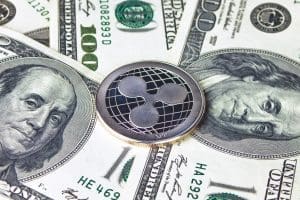In the blazing world of cryptocurrency, few tokens inspire as much fervent speculation as XRP, the native asset of the Ripple network. As of September 30, 2025, with XRP trading at around $2.88 amid a broader market recovery, whispers of mainstream adoption have reached fever pitch. The RefiGuide uncovers the mortgage crypto rumors and considers the XRP and Chase viral chatter on the internet.
Does Chase Accept XRP Crypto to Pay a Mortgage?

One particularly tantalizing rumor: JPMorgan Chase, America’s largest bank by assets, is now accepting XRP for mortgage payments and credit card transactions.
If true, this would mark a seismic shift, bridging the gap between digital assets and everyday finance.
But is it fact or crypto folklore?
We published this article to dissect the claim, its origins, the bank’s actual stance on crypto, and what such integration could mean for the future of payments. Drawing from recent reports and official statements, we’ll separate hype from substance in a landscape where blockchain promises collide with regulatory realities.
How the Ripple Rumor Ignited with JP Morgan
The notion of Chase embracing XRP first bubbled up in mid-2024 on platforms like Reddit and X (formerly Twitter), where XRP enthusiasts—often dubbed the “XRP Army”—amplified unverified posts. A August 2024 Reddit thread in r/XRP claimed, “JPMorgan Chase has announced that it will accept XRP for credit card and mortgage payments,” citing an alleged internal memo. By September, the story snowballed across Binance Square, TikTok, and LinkedIn, with viral videos and infographics declaring it a “revolutionary development.” One X post from September 16, 2025, exclaimed, “Breaking: JPMorgan Chase has officially started accepting $XRP for credit card and mortgage payments!” garnering over 10,000 likes.
Fueling the fire was Ripple’s ongoing legal victory against the SEC, finalized in 2024, which clarified XRP’s non-security status for retail sales. This greenlit institutional interest, and JPMorgan’s own blockchain experiments—via its Onyx platform—seemed like a perfect match. Social media sleuths pointed to a July 2025 CoinDesk report on JPMorgan planning crypto-backed loans as “proof,” misinterpreting it as direct XRP acceptance. Yet, as with many crypto tales, the devil lies in the details—or lack thereof. No press release from Chase’s official channels, no SEC filing, and no mention on their mortgage portal supports the claim.
Reality Check: No XRP at Chase—Yet
Digging deeper reveals this as classic misinformation. A direct review of Chase’s mortgage page on September 30, 2025, shows zero references to cryptocurrency payments; it’s all about traditional ACH transfers, checks, and autopay from linked accounts. JPMorgan’s investor relations site echoes this silence, focusing on fiat-based innovations like their Kinexys Digital Payments platform, which handles multicurrency settlements but explicitly avoids volatile assets like XRP.
Even Ripple’s CEO, Brad Garlinghouse, has distanced the company from such rumors. In a 2025 CNBC interview, he noted partnerships with banks but clarified, “We’re not dictating payment rails; we’re providing options.” JPMorgan’s crypto efforts center on their proprietary JPM Coin, a stablecoin-like token for institutional transfers, not public-facing consumer payments. A 2025 J.P. Morgan whitepaper on cross-border payments mentions XRP’s volatility as a risk, not an endorsement.
Fact-checkers like Snopes and Grok’s own analysis concur: “There is no definitive evidence from reliable sources confirming that JPMorgan Chase is currently accepting XRP.” The rumor persists due to echo chambers in crypto communities, where wishful thinking amplifies unvetted posts. A November 2024 CoinRepublic article even headlined “JPMorgan To Accept XRP For Retail Payments,” but it relied on anonymous sources without corroboration. In an era of deepfakes and AI-generated “news,” such claims erode trust, potentially luring retail investors into scams.
JPMorgan’s True Crypto Playbook: Onyx and Beyond
While XRP remains off the menu, JPMorgan isn’t shying from blockchain. Their Onyx by J.P. Morgan division, launched in 2020, processes over $1 trillion in annual transactions using permissioned ledgers. JPM Coin facilitates instant settlements between clients, slashing cross-border times from days to seconds—much like Ripple’s promise, but without XRP’s public volatility.
In July 2025, reports emerged of JPMorgan exploring crypto-backed loans, allowing clients to collateralize Bitcoin or Ethereum for fiat loans, potentially rolling out in 2026. An expert in The Crypto Basic called this a “huge validation for XRP” as legitimate collateral, but it’s a stretch—JPMorgan has historically criticized Ripple’s tech, favoring controlled ecosystems. CEO Jamie Dimon, a vocal crypto skeptic, reiterated in 2025 Davos remarks: “I’ll allow clients to do it, but I don’t want to hear about it.” This pragmatic stance explains the bank’s $2 billion+ in blockchain R&D without consumer-facing crypto payments.
For mortgages specifically, Chase’s $300 billion+ portfolio relies on stable, regulated rails. Accepting XRP would invite SEC scrutiny, AML headaches, and volatility risks—imagine a $400,000 monthly payment dipping 20% overnight. Instead, they’re piloting tokenized real estate on Onyx, where properties are fractionalized for institutional investors, per a 2025 pilot with BlackRock.
If It Were True: The Game-Changing Implications
Hypothetically, Chase adopting XRP could turbocharge crypto’s legitimacy. XRP’s speed (1,500 TPS) and low fees ($0.0002 per transaction) make it ideal for high-volume payments, potentially saving the industry $120 billion in cross-border costs annually, as per JPMorgan’s own estimates. For mortgage holders, it means instant global remittances—vital for expats—or hedging against inflation via crypto yields.
Broader ripple effects? A domino for banks like Wells Fargo or Citi to follow, boosting XRP’s price (analysts predict $2+ by 2026 on adoption news). It would validate Ripple’s vision post-SEC win, drawing $50 billion in institutional inflows. Consumers benefit from diversified payment options, reducing reliance on Visa/Mastercard’s 2-3% fees. Yet, risks loom: Tax implications (crypto sales trigger capital gains), wallet security breaches, and regulatory whiplash under a potential 2026 administration shift.
Environmentally, XRP’s energy-efficient consensus (vs. Bitcoin’s proof-of-work) aligns with ESG mandates, appealing to millennial borrowers. Socially, it could democratize access for unbanked populations, though Chase’s KYC requirements would limit that.
(Word count so far: 812)
The Road Ahead: Crypto Mortgage Payments in 2025 and Beyond
As 2025 closes, the payments sector teeters on transformation. Stablecoins like USDC hit $35 billion in circulation, with PayPal and Visa integrating them for merchant payouts. JPMorgan’s Kinexys eyes stablecoin interoperability, hinting at future crypto gateways. Ripple, meanwhile, partners with 300+ institutions for remittances, but consumer banking lags due to compliance.
For XRP bulls, the rumor underscores pent-up demand—polls show 40% of Americans open to crypto mortgages if regulated. Regulators like the OCC are warming, with 2025 guidelines for bank-issued stablecoins. If Chase dips a toe, it could via a pilot: XRP for international wire transfers tied to mortgages.
Skeptics, however, see barriers. Dimon’s “ponzi scheme” jabs persist, and XRP’s 2023-2024 price crashes (down 70% from peaks) deter risk-averse lenders. A YouTube analysis from August 2024 speculated backend XRP use, but it’s conjecture.
The Trust Between Banks and Crypto Is Growing
The tale of Chase accepting XRP for mortgages is a cautionary crypto yarn—equal parts excitement and exaggeration. While no evidence supports it today, the bank’s blockchain forays suggest it’s not implausible tomorrow. For now, stick to verified sources: Chase’s app for autopay, not Twitter for trends. As adoption inches forward, this rumor highlights a truth: Finance’s future is digital, but grounded in facts. Investors, verify before you vibrate; borrowers, explore options wisely. In 2025’s bull run, clarity cuts through the noise.
Can I get a home equity line of credit to buy crypto?
Yes, technically you can use funds from a HELOC to buy cryptocurrency, but most lenders discourage it due to the volatility and risk associated with digital assets. Once funds are disbursed, lenders generally do not control how you spend them, but using borrowed money for speculative investments can be risky. If the crypto loses value, you could still owe the HELOC balance, putting your home at risk. Careful financial planning is essential before using equity this way.
Do mortgage companies allow borrowers to use their crypto as an asset to qualify for a home loan?
Most traditional mortgage companies do not count cryptocurrency as a qualifying asset for income or reserves because of its volatility. However, some lenders may consider crypto holdings if converted to cash and seasoned in a bank account, typically for at least 60 days. A few niche or non-QM lenders may accept crypto in limited ways, but it is not yet widely recognized. Borrowers should be prepared to provide documentation and possibly liquidate crypto for approval.
References:
Reddit r/XRP. (2024, Aug 21). JPMorgan Chase to Accept XRP for Credit Card and…
X (Twitter). (2025, Sep 16). Breaking: JPMorgan Chase has officially started accepting $XRP…
